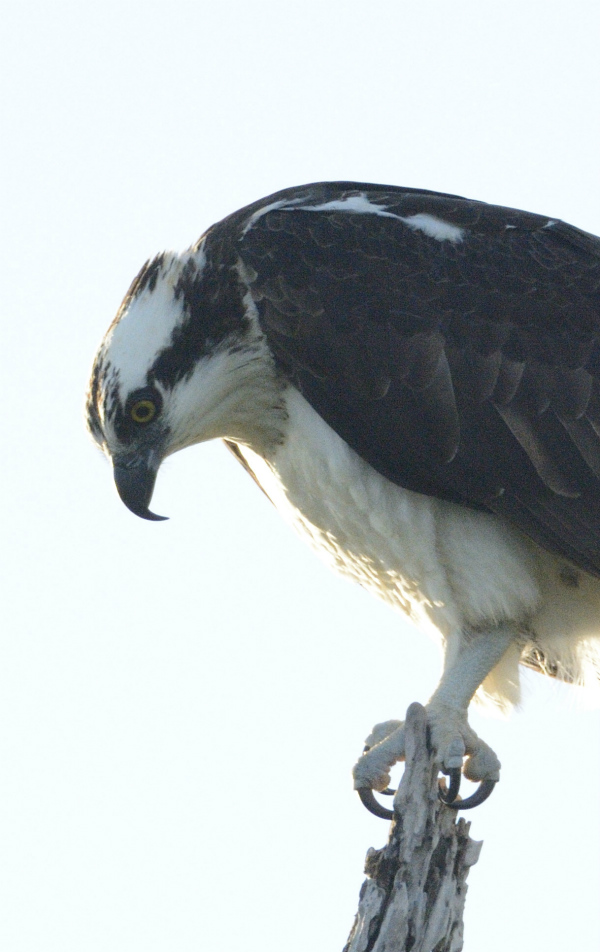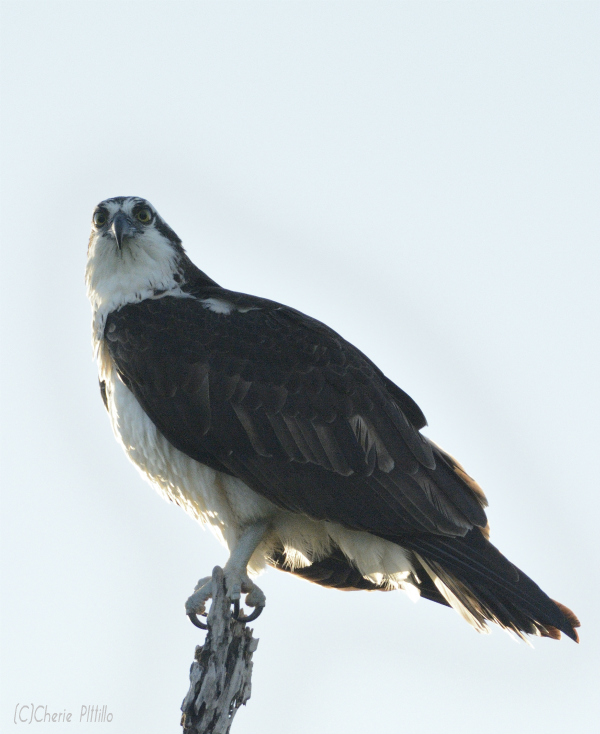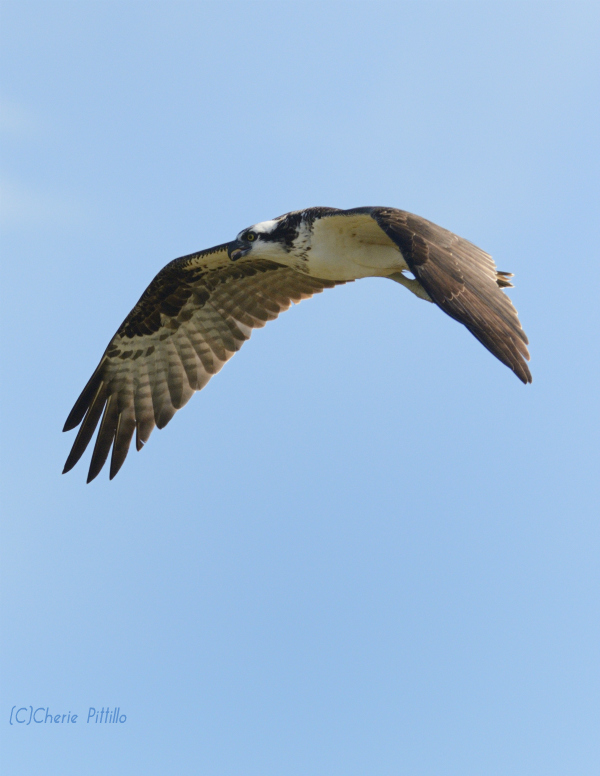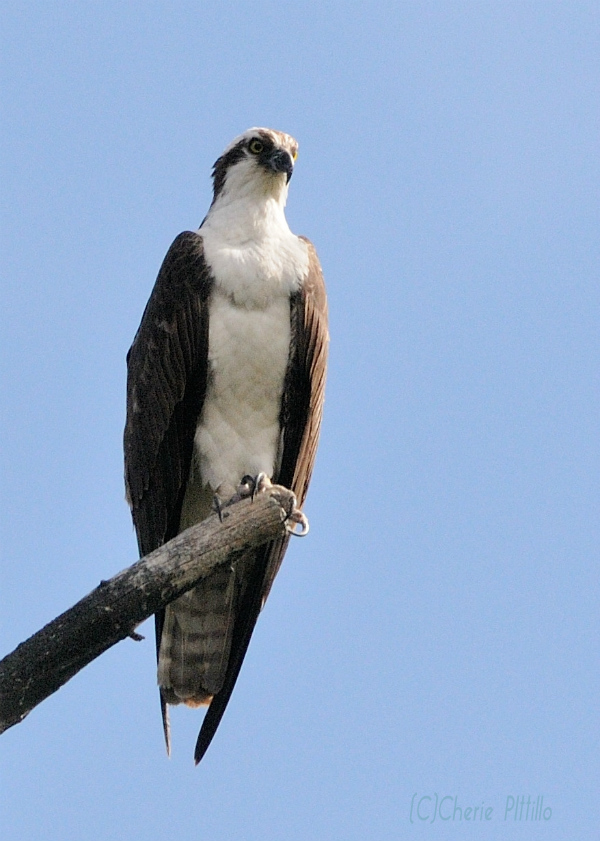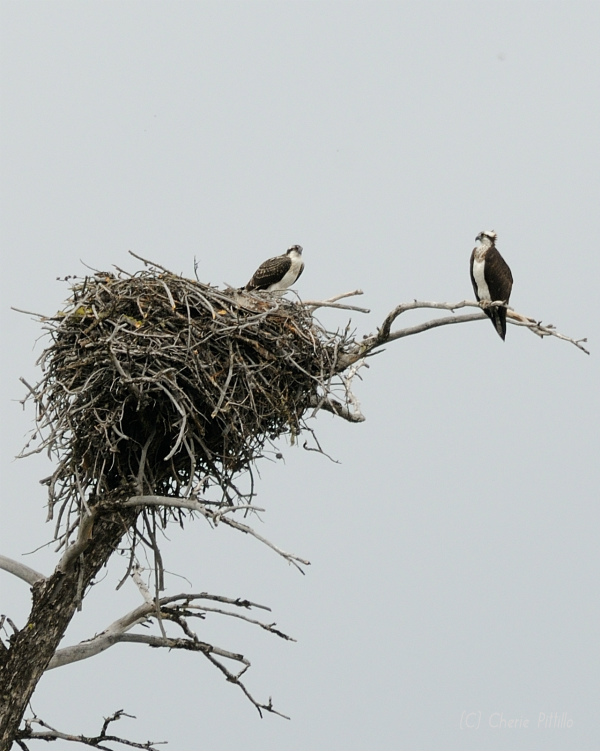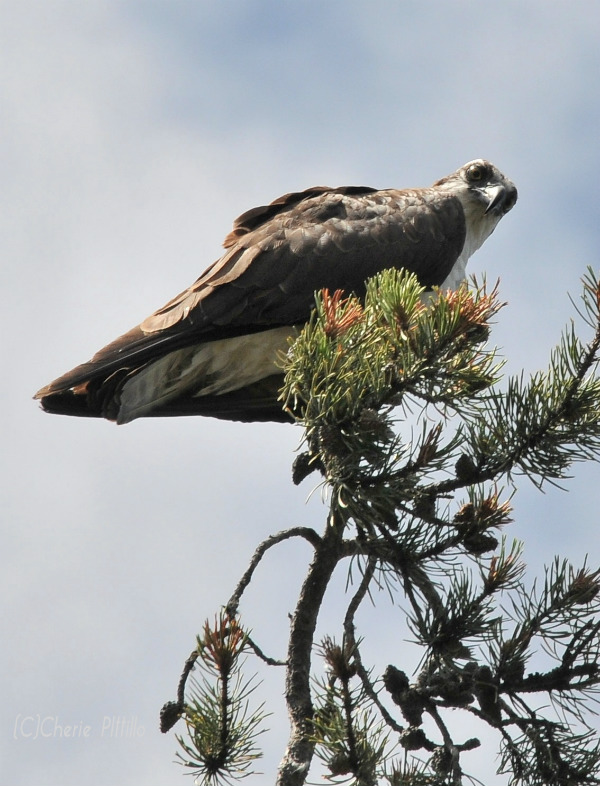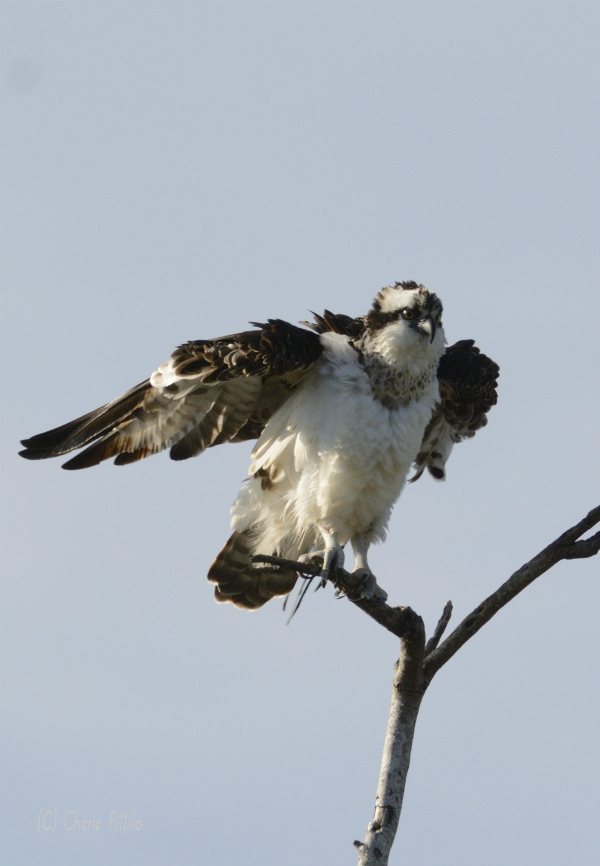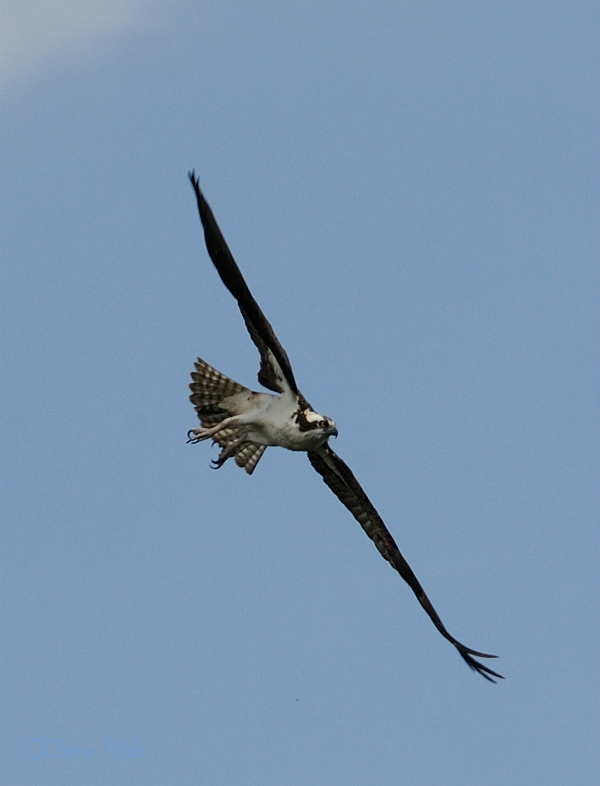OSPREY, Pandion haliaetus, Aguila Pescador (Spanish)
MALE SKY DANCER
Sound link of Sky-dancer: https://macaulaylibrary.org/audio/4140
Rapid wingbeats
pierce air
to climb
100’
500’
900’+ above
nest site
Screams of exuberance?
Territoriality?
Courtship?
Hovers
Downward dives of M-shaped wings
White belly shines
Arches upward
Levitates
Flutters wings
Swoops down
Rises steeply
Floats
Roller coaster circles
Repeats, repeats, repeats
To descend
Über undulations
of sound and white feather flashes
Down sky staircase
to the female
Sky Dance
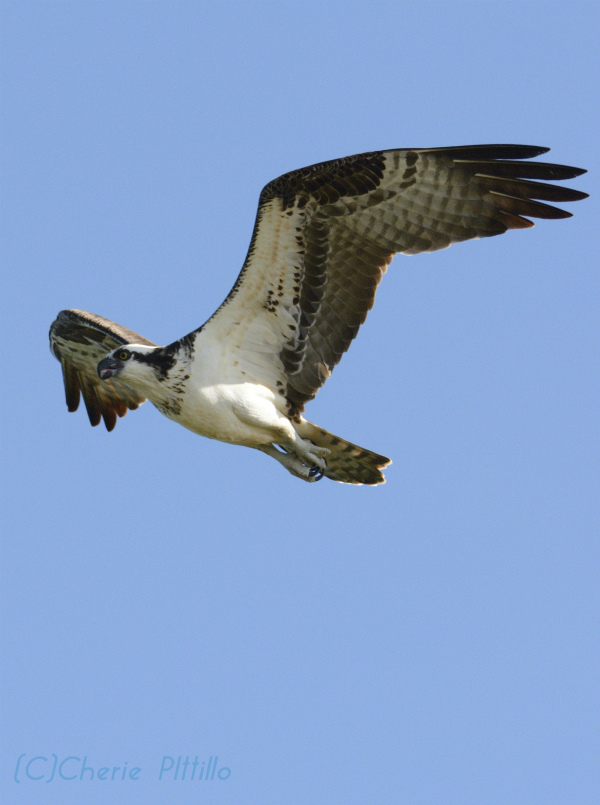
During the sky dance high above the nest site, the white feathers underneath the Osprey almost glow like a lighthouse
Surely a scientist with a poet’s heart named the territorial/courtship flight of the male osprey above the nest as “sky dance”. Others may name it “fish flight” as the male may dangle a fish in its talons during this aerial performance. Or it could carry a stick or a stake in those mighty claws. His sky writing works because the male knows how to “stake his claim” above his territory. A female awaits his descent to dine on the gift of “flying fish”.
Typically monogamous the pair build a bulky nest of sticks and sod which can attain 13 feet deep and seven feet wide over several years of use. Defending the nest puts a new meaning in “Stay away from my ‘turf’!” But the Osprey tolerates other species such as grackles, House Wrens, Starlings or English Sparrows who nest in the lower part of its stick-built home.
Telephone poles, channel markers, radio towers, manmade platforms, and trees become suitable nest sites. When built in pine trees, one theory indicates the pines may produce an insecticide, a nice advantage for nesting birds.
Sky dancing and courtship continue as the osprey pair may mate 15-20 times a day for three weeks. She even cheers him when he brings her food to the nest with a “chir-chir-chir” call.
I guess it’s eat, osprey, love.
Often called “fish hawk,” the Osprey preys mainly on live fish near the water’s surface. It dives feet first from a branch or the air into the first yard or so of water. With two toes forward and two backward on each foot, spine-covered toe pads help hold slippery fish. This bird of prey aligns the fish head first for an aerodynamic flight to a perch where it holds down the just caught sushi with its impressive “fish hooks” and tears the sushi apart with its hooked bill. After a meal or a dive, it’s time to air dry the feathers.
Another call: https://macaulaylibrary.org/audio/4141
Although found worldwide along coasts, lakes, and rivers, in the Yucatan the Osprey is a year round resident while the northern species becomes a winter visitor. Those that live permanently in the Yucatan have a whiter head than the migrant ospreys. By the way, the northern population winters to Central and South America. It seems all sky dance with their four-six foot wingspan.
EXPLORE NATURE FOR YOUR OWN SKY DANCE!
DISCLAIMER: References do not agree on details about this species: Life Histories of Birds of Prey, Stokes Guide to Bird Behavior, Vol 1, Sal a Pajarear Yucatan Guia de Aves, A Guide to the Birds of Mexico and Northern Central America, Birds and Reserves of the Yucatan Peninsula, Sibley Guide to Bird Life and Behavior, Lives of North American Birds, /https://www.allaboutbirds.org/, Birder/s Handbook, http://test.birdsna.org/Species-Account/bna/species/osprey/introduction, Peter Paul and Byrl J Kellogg https://macaulaylibrary.org/audio/4140 and 4141, http://www.allaboutbirds.org/guide/osprey
Cherie Pittillo, “nature inspired,” photographer and author, explores nature everywhere she goes. She’s identified 56 bird species in her Merida, Yucatan backyard view. Her column, published on the 7th and 21st of each month, features anecdotes about birding in Merida, Yucatan and beyond. Contact: [email protected] All rights reserved, ©Cherie Pittillo

